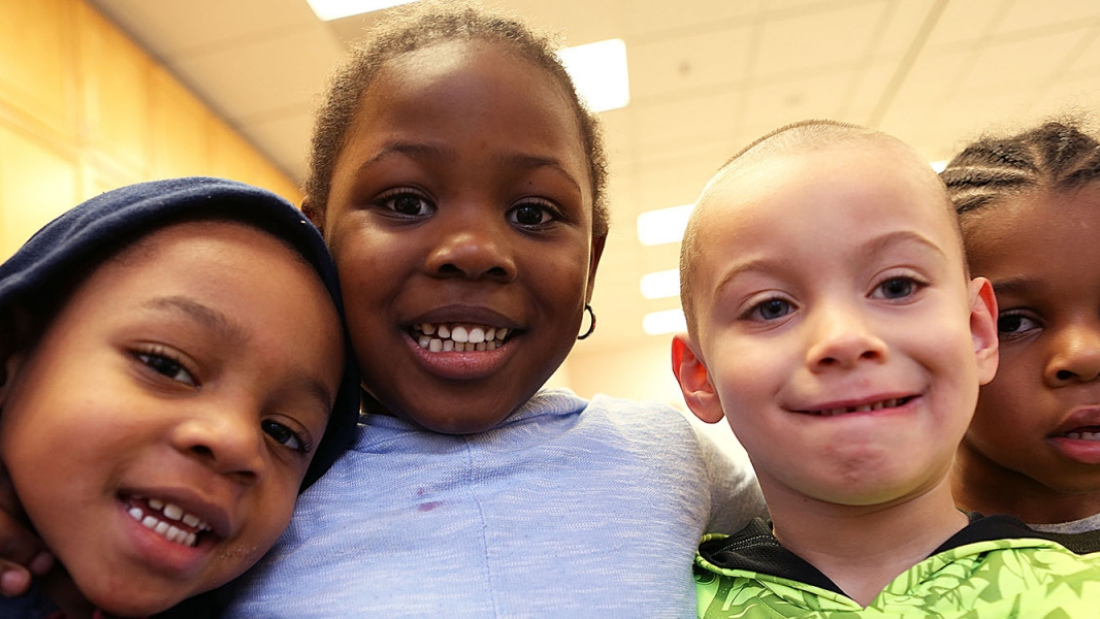Bite-Sized (and Effective) SEL

As the field of social-emotional learning has grown exponentially in recent decades, HGSE’s Stephanie Jones and her colleagues at the EASEL Lab have become the field’s cartographers — developing a suite of essential tools and resources to help educators, districts, states, and influential funders and policy advisors navigate its often hazily defined skills and goals.
Stephanie Jones and the EASEL Lab at HGSE have helped bring much-needed clarity to the field of social-emotional learning, advancing our knowledge of how SEL works (and how it can work better).
Over the last 10 years, Jones has made a singular contribution to our understanding of what kinds of SEL interventions may work for which types of behavioral outcomes or academic targets; how to maximize the impact of SEL in your school; and which SEL framework or set of programs you may need for your particular setting or educational challenge. Much of this evaluation, curriculum development, and program assessment — now available at Explore SEL, a site that her lab developed and launched in 2019 — had never been done before.
As a result of her team’s work, we know that the key to a high-quality, impactful SEL program — one capable of building social-emotional skills that translate into positive life experiences — is that it must be a whole-school effort.
We also know that educators can help build those skills across the school day. Among other things, they can facilitate quick activities and routines (good for use at any time of day, including during downtime or transitions) that build specific SEL skills — activities that Jones and her team have called kernels of social-emotional learning. Jones had originally developed some of these kernels as “brain games”— eventually partnering with the nonprofit Hope Lab to produce a set of materials — that would help students develop executive function and self-regulation skills in engaging ways.
Across her work, Jones has been dedicated to bringing the principles of rigorous research to a field that lacked a common vocabulary, clearly defined goals, and shared metrics. In a report for the Wallace Foundation, she analyzed 25 of the leading social-emotional learning programs, seeking to learn which components worked, under what circumstances, and why. As she told the Hechinger Report in 2019, “Our idea is that maybe what’s driving some of those effects are the things that are common across [the programs] that everybody views as important enough to embed in their program. What if we pulled those out? Could those just stand on their own? Would we see effects that are similar to or greater than what we observe with a more comprehensive approach?”
That work has culminated in the development of Explore SEL, a tool that matches particular needs and topics with effective SEL frameworks. The hope is that institutions that act as mediators between SEL research and its implementation in schools — grant-making agencies, think tanks, departments of education, nonprofits — can use it to ensure common definitions of SEL vocabulary, so decision-makers can determine which framework will target their needs, and thus make a wiser investment.
The work is too important for murky definitions and vague deliverables, as Jones has helped us understand. “Words and the definitions matter,” she has said. “We should strive to connect our words and definitions to those others are using so that we are coordinated in what we do.” – Bari Walsh
Learn more and connect
Read the Usable Knowledge piece, "Defining Social-Emotional Learning."
Learn more about the EASEL Lab at HGSE.
Read the report from the Wallace Foundation, Navigating Social Emotional Learning from the Inside Out.
